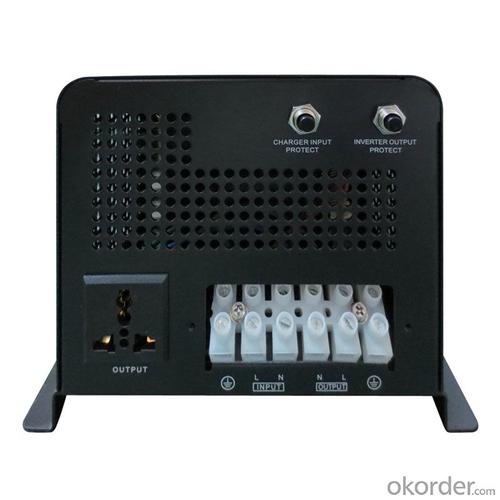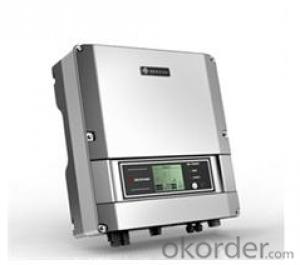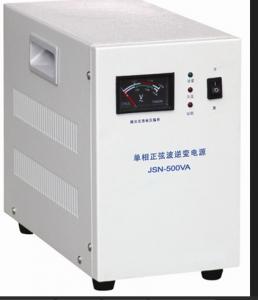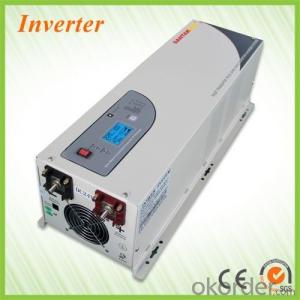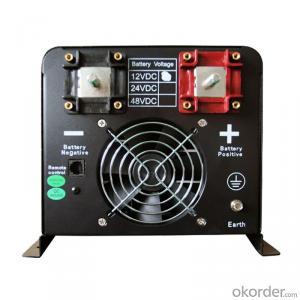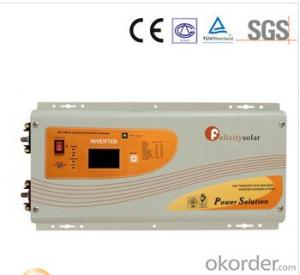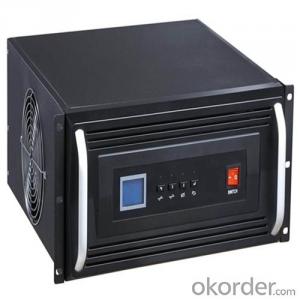3kw Solar Inverter Price Pure Sine Wave Inverter 48V 6000W 2024 Top Selling South Africa EP 3000 SeriesWave Inverter
- Loading Port:
- China main port
- Payment Terms:
- TT OR LC
- Min Order Qty:
- 100 pc
- Supply Capability:
- 1000 pc/month
OKorder Service Pledge
OKorder Financial Service
You Might Also Like
EP3200 series inverter adopt very new model copper transformer so the efficiency reach to 90% and lower consumption (NEW !)
Pure sine wave solar hybrid inverter for solar system and home appliances . EP3200 series developed on the base of our very popular EP3000 series . EP3200 has achieved significant improvements on battery charging , AC transfer , bypass etc .
By adopting DIP(Dual-in-line) switch , EP3200 series inverter provides more smarter options for users to customize the performance of the device . Main for home solar system including air conditioner , refrigerator , washing machine , water pump , fans , tv , lights etc .
Features :
1. High overload ability of our EP3200 charger is up to 300% rated power
2. EP3200 pure sine wave inverter adopts low quiescent current, and power saver mode to reduce power consumption to 3W . It can extract max. power from various batteries with different protections, and low voltage trip can be selected (10V/10.5V/11V).
3. Uses PFC (power factor correction) for charger, which has less power consumption than conventional units.
4. It has 10s delay before transfer when AC resumes, and overload protection when our APC pure sine wave inverter equips with generator.
5. 10ms typical transfer time between battery and AC, which guarantees power continuity of EP3200 charger. Uses selectable input AC voltage (185-265V or 155-255V) for different kinds of loads.
6. Our EP3200 charger allows start up and through power with depleted batteries. Its powerful charge rate up to 70Amp.
7. It can offer 3-step intelligent battery charging, and equipped with 6 preset battery type selector for totally flat batteries.
8. LCD status display, battery/AC priority switch, RS232 communication port are available for our EP3200 pure sine wave inverter, it also has 17 alarms/warnings for easier operation and trouble-shooting, and ability to switch the unit on/off. In addition, select/deselect power saver mode can be used too.
| Rated Capacity | 4000W | 5000W | 6000W | |
| Efficiency | >90% | |||
| Input | ||||
| Model | 120v Models | 230v Models | ||
| Nominal Voltage | 100V/110V/115V/120VSelectable | 200V/220V/230V/240V Selectable | ||
| Output | ||||
| Rated Power | 4000W | 5000W | 6000W | |
| Output Voltage | 100V/110V/115V/120V Selectable | 200V/220V/230V/240V Selectable | ||
| Voltage Waveform | Pure Sine Wave | |||
| Crest Factor | 3:1 | |||
| Transfer Time | Transfer Time : AC To DC : 10ms (Typical) Transfer Time : DC To AC : 10ms(Typical ) | |||
| Max Bypass Overload Current | 30A | |||
| Input | ||||
| Nominal Voltage | DC24V/48V | DC48V | DC48V | |
| Over Current Protection | By Re-Settable Over Current Protector | |||
| Output | ||||
| Regulation (Nominal) | ±10% Typical Of Nominal Voltage | |||
| Nominal Input Voltage | 230Vac | |||
| Input Voltage Range | 185-265Vac | |||
| Nominal Output Voltage | According To The Battery Type | |||
| Nominal Charge Current | 30Amp-70Amp | |||
| Battery Type | Lead-Acid 12Ah ~ 250Ah | |||
| Typical Backup Time | No Limit | |||
| Charging Method | Smart Pulse Charging With Two Charging Modes: Quick Charging When Battery Is Not Fully Charged, Trickle Charging When Battery Is 90% Fully Charged. | |||
| Average Charging Current | 65A/35A | 70A/40A | 50A | |
| Battery Voltage options | ||||
| Options 7 | Battery low trip to bypass 11v , high trip to battery 14v | |||
| Options 8 | Battery low trip to bypass 10.5v , high trip to battery 13.5v | |||
| Options 9 | Battery low trip to bypass 10v , high trip to battery 13v | |||
| Communications & Management | ||||
| Control Panel | LCD/LED Option | |||
| Audible Alarm | Alarm On Battery: Low Battery & Battery Over Voltage Alarm On Abnormal Operation: Over Load, Short-Circuit, & Over Heat | |||
| Environment And Safe | ||||
| Operating Temperature | 0℃ To 40℃ (32℉ To 104℉) | |||
| Transit/Storage Temperature | -15℃ To 60℃ | |||
| Audible Noise | 60 Dba Max at 1m | |||
| Quality Control System | ISO 9001,FCC,CE | |||
| Physical | ||||
| Dimensions: (H×D×W) | 755*320*310mm | |||
| G.W (Kg) | 37.5 | 47.5 | 47.5 | |
| Packing | Export Carton For Each Unit Per Carton | |||
| Rated Capacity | 4000W | 5000W | 6000W | |
| Efficiency | >90% | |||
| Input | ||||
| Model | 120v Models | 230v Models | ||
| Nominal Voltage | 100V/110V/115V/120VSelectable | 200V/220V/230V/240V Selectable | ||
| Output | ||||
| Rated Power | 4000W | 5000W | 6000W | |
| Output Voltage | 100V/110V/115V/120V Selectable | 200V/220V/230V/240V Selectable | ||
| Voltage Waveform | Pure Sine Wave | |||
| Crest Factor | 3:1 | |||
| Transfer Time | Transfer Time : AC To DC : 10ms (Typical) Transfer Time : DC To AC : 10ms(Typical ) | |||
| Max Bypass Overload Current | 30A | |||
| Input | ||||
| Nominal Voltage | DC24V/48V | DC48V | DC48V | |
| Over Current Protection | By Re-Settable Over Current Protector | |||
| Output | ||||
| Regulation (Nominal) | ±10% Typical Of Nominal Voltage | |||
| Nominal Input Voltage | 230Vac | |||
| Input Voltage Range | 185-265Vac | |||
| Nominal Output Voltage | According To The Battery Type | |||
| Nominal Charge Current | 30Amp-70Amp | |||
| Battery Type | Lead-Acid 12Ah ~ 250Ah | |||
| Typical Backup Time | No Limit | |||
| Charging Method | Smart Pulse Charging With Two Charging Modes: Quick Charging When Battery Is Not Fully Charged, Trickle Charging When Battery Is 90% Fully Charged. | |||
| Average Charging Current | 65A/35A | 70A/40A | 50A | |
| Battery Voltage options | ||||
| Options 7 | Battery low trip to bypass 11v , high trip to battery 14v | |||
| Options 8 | Battery low trip to bypass 10.5v , high trip to battery 13.5v | |||
| Options 9 | Battery low trip to bypass 10v , high trip to battery 13v | |||
| Communications & Management | ||||
| Control Panel | LCD/LED Option | |||
| Audible Alarm | Alarm On Battery: Low Battery & Battery Over Voltage Alarm On Abnormal Operation: Over Load, Short-Circuit, & Over Heat | |||
| Environment And Safe | ||||
| Operating Temperature | 0℃ To 40℃ (32℉ To 104℉) | |||
| Transit/Storage Temperature | -15℃ To 60℃ | |||
| Audible Noise | 60 Dba Max at 1m | |||
| Quality Control System | ISO 9001,FCC,CE | |||
| Physical | ||||
| Dimensions: (H×D×W) | 755*320*310mm | |||
| G.W (Kg) | 37.5 | 47.5 | 47.5 | |
| Packing | Export Carton For Each Unit Per Carton | |||
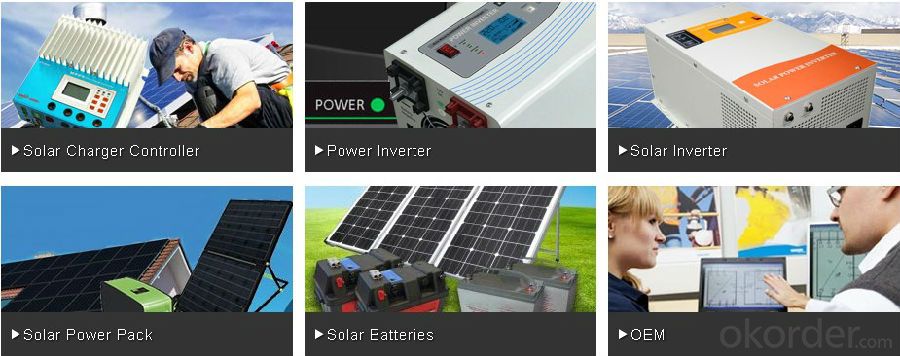
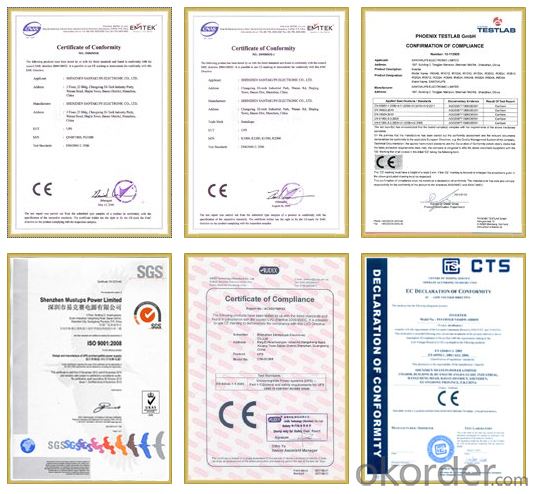
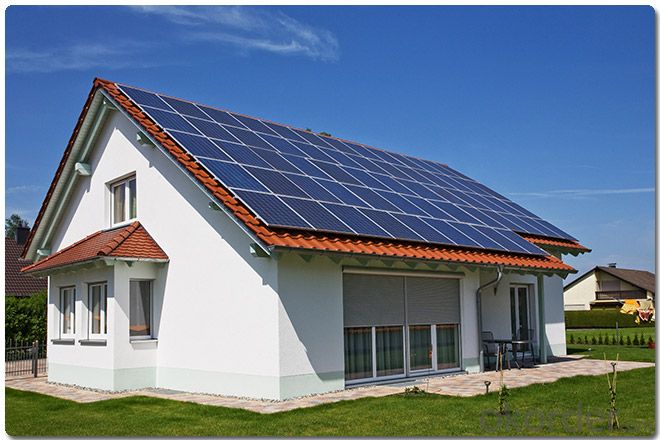
Warrenty
provides a 1~3 year limited warranty (“Warranty”) against defects in materials and workmanship for its Uninterruptible power supply, Power inverter/chargers, Solar charge controllers, Battery Products (“Product”).
The term of this Warranty begins on the Product(s) initial purchase date, or the date of receipt of the Product(s) by the end user, whichever is later. This must be indicated on the invoice, bill of sale, and/or warranty registration card submitted to MUST-Solar. This Warranty applies to the original MUST-Solar Product purchaser, and is transferable only if the Product remains installed in the original use location.
FAQ
1. How do I decide which system is right for me ?
For protection from long outages, include a generator or solar panels in your Must solar system. Shorter outages can be handled by a battery-only system.
2. Where my system will be installed ?
Must solar systems are usually wall-mounted near a home's main electrical (circuit breaker) panel.
3. How do I install my system ?
A must solar backup inverter is connected to a home electric system , we will supply detailed installation manual and videos for our customers .
- Q: Can a solar inverter be used with concentrated solar power systems?
- Yes, a solar inverter can be used with concentrated solar power systems. Concentrated solar power systems use mirrors or lenses to concentrate sunlight onto a receiver, which then converts the solar energy into heat or electricity. The solar inverter is responsible for converting the DC (direct current) power generated by the concentrated solar power system into AC (alternating current) power that can be used to power appliances and feed into the electrical grid. Therefore, a solar inverter is an essential component in the integration of concentrated solar power systems into the electrical infrastructure.
- Q: Can a solar inverter be used with batteries for energy storage?
- Yes, a solar inverter can be used with batteries for energy storage. The solar inverter converts the DC (direct current) electricity generated by the solar panels into AC (alternating current) electricity that can be used to power household appliances. When connected to batteries, the excess solar energy generated during the day can be stored in the batteries for later use, such as during nighttime or when the solar panels are not producing enough electricity. This allows for a more efficient and reliable use of solar energy.
- Q: What is the role of a reactive power controller in a solar inverter?
- The role of a reactive power controller in a solar inverter is to regulate and manage the reactive power flow in the electrical system. It ensures the power factor remains within acceptable limits, improving the overall stability and efficiency of the solar inverter system. The reactive power controller monitors the reactive power demand and supply, adjusting the voltage and current as needed to maintain a balanced power factor and minimize losses in the system.
- Q: What is the operating temperature range of a solar inverter?
- The operating temperature range of a solar inverter typically falls between -20°C to 50°C (-4°F to 122°F), although this can vary depending on the specific model and manufacturer.
- Q: Can a solar inverter be used in areas with high altitude and low temperature conditions?
- Areas with high altitude and low temperature conditions can indeed use a solar inverter. However, it is important to take certain factors into account when choosing one for such conditions. The efficiency of a solar inverter can be affected by high altitude, as the reduced air density and oxygen levels can lead to a decrease in power output from the solar panels. Therefore, it is vital to select an inverter that is specifically designed to function at high altitudes. These inverters come equipped with features like advanced cooling systems and improved power electronics to ensure optimal performance in such environments. Similarly, low temperature conditions can also impact the efficiency of a solar inverter. Cold temperatures can negatively affect the internal components of the inverter and overall performance. To overcome this challenge, it is recommended to choose an inverter that is designed to operate in low-temperature environments. These inverters typically include features such as internal heaters and temperature sensors to maintain optimal performance even in freezing temperatures. Furthermore, it is advisable to seek guidance from a professional solar installer or manufacturer who can assist in selecting the most suitable solar inverter for high altitude and low-temperature conditions. They can consider factors like local climate, altitude, and specific installation requirements to ensure that the system is designed to withstand and perform optimally in these demanding conditions.
- Q: What certifications should I look for when choosing a solar inverter?
- When choosing a solar inverter, it is important to look for certifications such as UL listing, IEC 61727 compliance, and IEEE 1547 compliance. These certifications ensure that the inverter meets safety and performance standards, and is compatible with grid connection requirements.
- Q: Are there any specific installation requirements for solar inverters?
- Yes, there are specific installation requirements for solar inverters. Here are some key considerations: 1. Location: Solar inverters should be installed in a well-ventilated area, away from direct sunlight or any potential sources of heat. They should also be placed in a clean and dry environment to ensure optimal performance and longevity. 2. Mounting: Inverters can be mounted on walls or placed on flat surfaces, but it is important to follow the manufacturer's guidelines for proper mounting techniques and ensure that they are securely fastened. 3. Wiring: Adequate wiring is essential for connecting the solar panels to the inverter and the inverter to the electrical grid. The wiring should be properly sized, based on the system's specifications, to handle the voltage and current requirements without any voltage drop or overheating. 4. Electrical connections: The inverter should be connected to a dedicated circuit breaker or fuse in the main electrical panel. This circuit breaker or fuse should be properly sized to protect the inverter and the electrical system from any potential hazards. 5. Clearances: Solar inverters require specific clearances to ensure proper ventilation and prevent overheating. The manufacturer's guidelines should be followed to determine the necessary clearances around the inverter. 6. Monitoring and safety devices: Some inverters require additional monitoring and safety devices, such as surge protectors, arc fault circuit interrupters (AFCIs), or rapid shutdown devices. These devices should be installed according to the manufacturer's instructions and local electrical codes. 7. Compliance with regulations: It is crucial to comply with local electrical codes and regulations when installing solar inverters. This may include obtaining necessary permits and inspections to ensure a safe and compliant installation. It is recommended to consult with a professional solar installer or electrician who is knowledgeable about solar inverter installations to ensure that all the specific requirements are met for your particular system.
- Q: Can a solar inverter be used with different types of power conditioning units?
- Yes, a solar inverter can be used with different types of power conditioning units. Solar inverters are designed to convert the DC power generated by solar panels into AC power that can be used by various electrical devices. They can be compatible with different types of power conditioning units, such as battery storage systems or grid-tied inverters, depending on the specific requirements and setup of the solar power system.
- Q: How does a solar inverter communicate with monitoring systems?
- A solar inverter communicates with monitoring systems through various means such as wireless technologies like Wi-Fi, Bluetooth, or Zigbee, or through wired connections like Ethernet or RS485. These communication channels allow the inverter to transmit important data and performance metrics to the monitoring systems in real-time.
- Q: Is the PV inverter a current source or a voltage source?
- Photovoltaic inverter, also known as power regulator, according to the inverter in the use of photovoltaic power generation system can be divided into two kinds of independent power supply and grid.
Send your message to us
3kw Solar Inverter Price Pure Sine Wave Inverter 48V 6000W 2024 Top Selling South Africa EP 3000 SeriesWave Inverter
- Loading Port:
- China main port
- Payment Terms:
- TT OR LC
- Min Order Qty:
- 100 pc
- Supply Capability:
- 1000 pc/month
OKorder Service Pledge
OKorder Financial Service
Similar products
Hot products
Hot Searches
Related keywords




